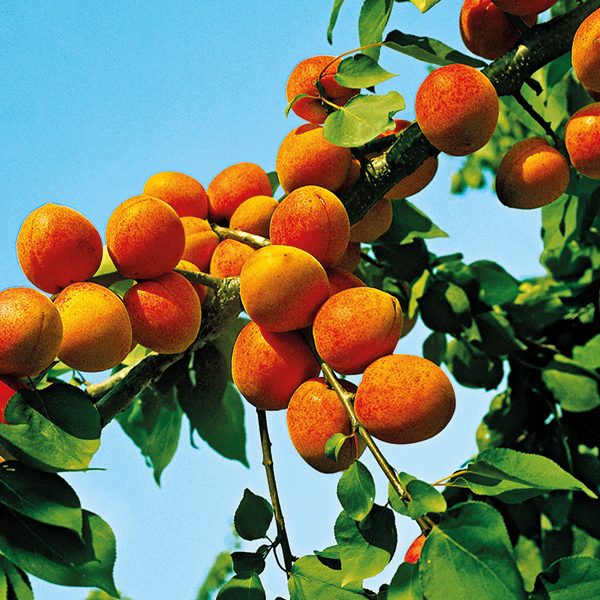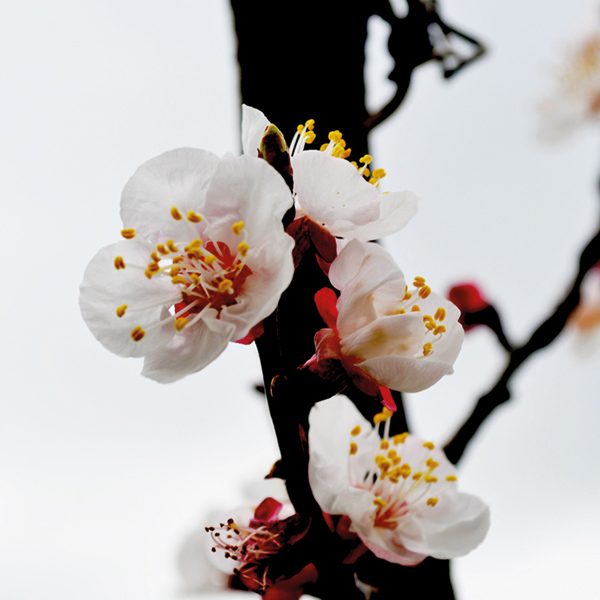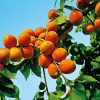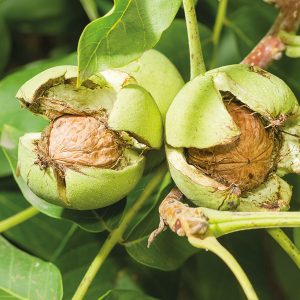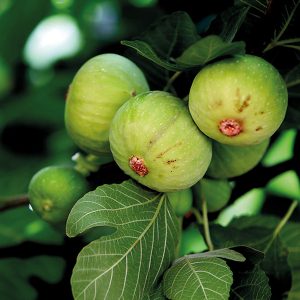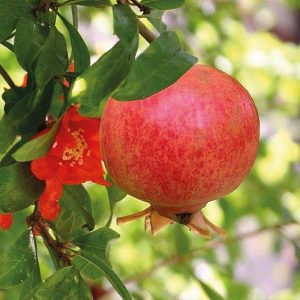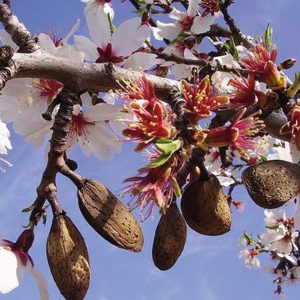Prunus armeniaca (meaning Armenian plum), the most commonly cultivated apricot species, also called ansu apricot, Siberian apricot, Tibetan apricot, is a species of Prunus, classified with the plum in the subgenus Prunus. The native range is somewhat uncertain due to its extensive prehistoric cultivation, though almost certainly somewhere in Asia. It is extensively cultivated in many countries and has escaped into the wild in many places.
Medium low productivity, medium vigor, medium small size, excellent taste
Maturation from the third decate of May.
Medium vigor tree with medium-large sized fruits, light orange in color and red over-color, the taste is acidulous. The fruits reach maturity at the end of June. Tree native to Asia Minor that prefers warm climates, tolerating drought well, but fearing wetlands.
Maturation the end of May to the end of June.
Bergeron apricot plant, a variety of French origin that almost 40% belongs to. Variety that best adapts to cold climates in which it best expresses the organoleptic potential of the fruits. The fruit is oblong in shape with the yellow orange color typical of saffron. The flesh is compact and fragrant firm, stands out.
Maturation in mid-July.
Biricoccolo plant, it is a natural cross between plum and apricot, a very rustic plant, well suited to any stony or clayey soil, beautiful and abundant white spring flowering. The fruit is spherical and has the intermediate characteristics between the two cultivars, the skin is reddish with the apricot hair, the yellowish pulp, yielding and juicy like a plum. Suitable both for fresh consumption and for jams.
Maturation in late-June.
Compact growth-control apricot, which can reach a maximum height of 2 meters. Suitable for home garden and small spaces. Medium-early flowering, self-fertile, very resistant with high production. Resists well to the cold, does not require special types of soil, avoid in any case water stagnation and radical asphyxia.
Maturation at the end of July.
Very vigorous tree of French origin, with large, yellow-orange fruits and darker dots, with a sweet taste. The fruit ripens in mid-July. Tree native to Asia Minor that prefers warm climates, tolerating drought well, but fearing wetlands.
Maturation in second decade of June.
The Apricot ‘Palumella’ is a fruit tree. It has large fruits, intense orange, almost red, with firm flesh.
Maturation from mid-July.
Vigorous tree with medium-large sized fruits, with smooth skin of yellow-orange color and sweet-sour taste. The fruit ripens at the end of July. Tree native to Asia Minor that prefers warm climates, tolerating drought well, but fearing wetlands.
Maturation in mid July
Excellent size and productivity, very sweet, consistent. Elongated shape with red blush.
Maturation in first decade of July.
Tree with large, yellow-red fruits that ripen in late-July. Tree native to Asia Minor that prefers warm climates, tolerating drought well, but fearing wetlands.
Maturation in late-July.
Tree with medium-large sized fruits, orange in color with red over-color, with an aromatic flavor. Fruit ripening occurs at the beginning of July. Tree native to Asia Minor that prefers warm climates, tolerating drought well, but fearing wetlands.
Maturation from early-July.
Very productive early tree, with medium-sized fruits, light yellow in color and slightly acidic taste. Early maturation occurs at the beginning of June. Tree native to Asia Minor that prefers warm climates, tolerating drought well, but fearing wetlands.
Maturation from early-June.
Vigorous tree with medium-large sized orange-yellow fruits, with a sour taste, which ripen in mid-July. Tree native to Asia Minor that prefers warm climates, tolerating drought well, but fearing wetlands.
Maturation in mid-July.
Deciduous fruit tree belonging to the Rosaceae family. Erect, tree-like habit with wide branched foliage. It reaches a height of 5-7 meters. Smooth, heart-shaped leaves and serrated edge. White-pink flowers in spring. Medium-large fruits. Carmine orange peel. Juicy, sweet and fragrant pulp. It prefers a fertile and drained soil.
Maturation in late-June.


